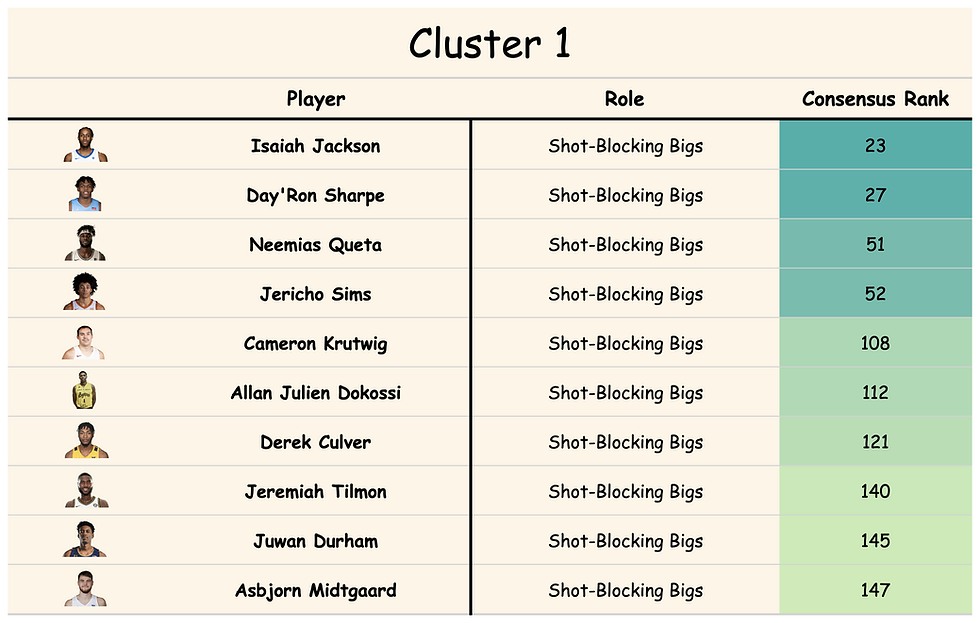A Visual Look at How Points Per Shot (PPS) Has Affected Modern Basketball
- Dominic Samangy
- Jun 20, 2021
- 3 min read
In math, 3 is greater than 2. However, do we as fans really understand why the same (mostly) applies to basketball as well? Well, here is a visual guide as to what this means and how it affects the modern game of basketball.
In this article, I’ll discuss FG% & PPS. Points per shot (PPS) in a short explanation is: the number of expected points scored on a given shot. For example, say Player A shoots 40% from 2PT and 3PT.
40% x 2 PTS = .8 PPS
40% x 3 PTS = 1.2 PPS
This gives a better look at the efficiency and effectiveness of taking specific shots rather than just FG%.

First, let’s look at Curry’s unanimous MVP season. His FG% chart shows he is elite from 3 and in the midrange, but his PPS chart tells a different story. It doesn’t matter that he shoots better from midrange because on average, his 3PT PPS is 1.44x more than his midrange PPS.

For an even closer look, check out the right corner. Despite shooting nearly 12% better from 16- 24ft (which is a ton), his average PPS is .2 less than corner 3. This shows that an absurd 55% midrange can’t even outscore the 3. Also, a margin of +.2 may not seem like a lot, but it is long term.
Now we can see how PPS is an effective tool and visualizes how Curry can score more points quickly. But how can other, non-MVP caliber players benefit from it? Well, look no further than current Bucks center Brook Lopez.

Lopez went from a volume reliant paint player to an efficient, floor-spacing big who fits like a glove for Milwaukee. By taking more 3’s and less midrange j’s, Lopez increased his PPS by nearly 140% in just 4 years. So, for each additional 100 shots, he's scoring 40 more points!
This adaptation was CRUCIAL. With his old profile, it makes you think... would he still be in the league? An aging, 1-dimensional Lopez on a horrid Nets team is now probably a role player. Instead, now at 32, he is starting for an Eastern conference powerhouse.
Lopez survives on PPS but who has PPS claimed? Michael Kidd-Gilchrist is a prime example. A former 2nd overall pick who could never put his perimeter shot together, is now out of the league at 27 y/o because his other skills could not mask his inefficiencies as a scorer/shooter.

We can see that MKG never improved as a shooter and only took > 20 3’s in a season once in his career. He did somewhat improve in terms of PPS but just not enough to survive in the league today. Unless you have other elite tools (Giannis, Simmons), PPS will eventually get you.
Takeaway for players: Whether you are a young/HS/college player, this shows how important shooting is. Get in the gym and get your shots up because in the long run, it is the most valuable asset and will keep you on the floor (32 y/o Lopez).
Takeaway for coaches/fans:
The midrange is not dead but it's currently playing bingo at a retirement home. In the flow of the game, a midrange will be the best shot here and there, but efficient teams limit these and understand when to take them. This synergy is ESSENTIAL.
Overall, basketball has moving away from the post-up and midrange game for years, but some fans have either failed to realize this or are just reluctant to recognize it. Statistically, rim attempts are almost always the best/most efficient shots to take with three pointers behind them. Teams have recognized this, and this is why shooting records are constantly being broke at all levels. More players are taking more threes and rightly so.
I hope you enjoyed this read and that it helps visual the changes at hand. As with everything, those who do not adapt will not survive. Perimeter shooting is ruling modern basketball and players/teams that capitalize on this efficiently will see success.








Comments